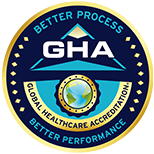VARICOSE VEINS
What are varicose veins
Varicose veins are a chronic venous disease which causes circulatory disorders that makes blood accumulate in the veins of the legs
What are varicose veins?
"Varicose veins are when the veins on your legs protrude?" No.
The heart pumps blood through the arteries to the tissues and organs of the body, supplies the cells with oxygen, after which the veins transport the blood back to the heart. Varicose veins are a disease when the blood that has to return back up the legs can't flow up, causing problems with the entire circulatory system of the lower extremities.
In case of failure of the venous valves, which prevent the reverse flow of blood, or the inability of the calf muscles to perform the function of a pump, accumulating in the veins of the legs blood provokes an increase of pressure, as a result of what blood vessels swell, and their walls stretch and deform. Deformed veins can protrude above the surface of the skin, or they can manifest themselves only as invisible unpleasant symptoms.
If varicose veins are left untreated, the disease will progress and impaired blood circulation will lead to such dangerous complications as skin necrosis, ulceration, deep vein thrombosis and pulmonary embolism. Therefore, timely treatment of varicose veins is absolutely necessary.
Factors provoking varicose veins
The causes of varicose veins can be congenital: weak vein walls, family history and purchased: lifestyle, hormones
-

Heredity
If one of the parents has varicose veins
- - 25% chance for son to have varicose veins
- - 62% chance of daughter's disease
If both parents have varicose veins
- - More than 90% chance of occurrence of varicose veins regardless of daughter or son
-

Profession
When there is a lack of movement of the calf muscles during a day, blood cannot circulate smoothly and easily become stagnant in the legs. Likewise, in the case of students who sit without movement for a long time and those who are bedridden for a long time, there is a possibility of varicose veins or thrombosis in stagnant blood, due to poor venous blood circulation.
-

Pregnancy,
and taking hormonesThe continuous increase in female hormones has the property of weakening the blood vessels and makes them easily stretch. As you gain weight, your blood volume also increases and puts more stress on your vein walls.
-

Life habits
Lack of physical activity, alcohol consumption or smoking, high-fat or high-salt foods, frequent sauna visits - factors that disrupt normal blood circulation through the veins and cause vasodilation
-

Aging and injury
Reduced vascular elasticity
- - Venous vessels are easily dilated
- - Onset of venous blood reflux
Calf muscle weakness
- - Decreased power to raise leg blood
- - Leg venous blood stasis
-

Obesity
High body weight → increased load on the legs → increased venous pressure → development of varicose veins
Weight gain → increased blood volume → dilated veins → weakened vein wall → development of varicose veins















